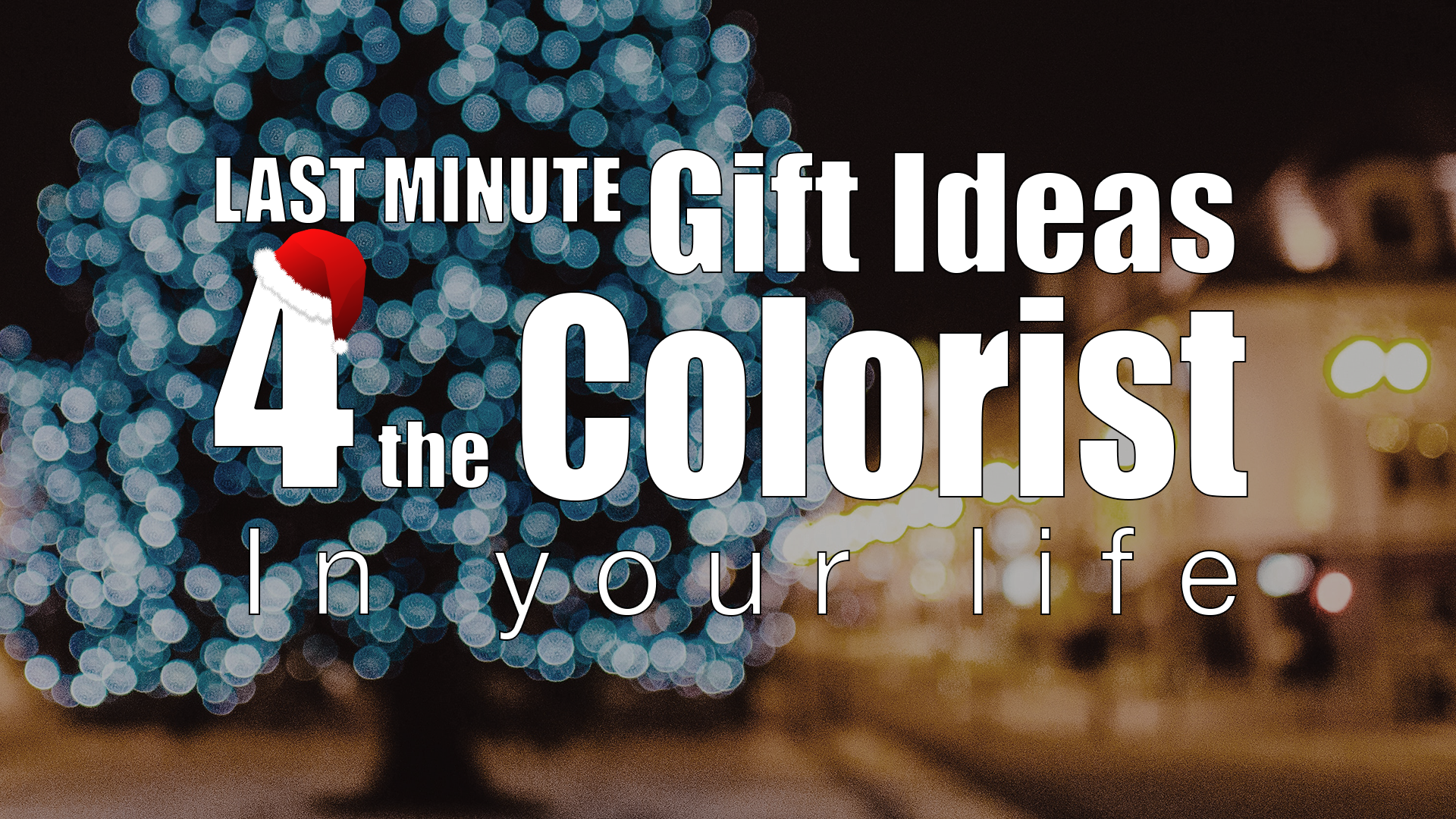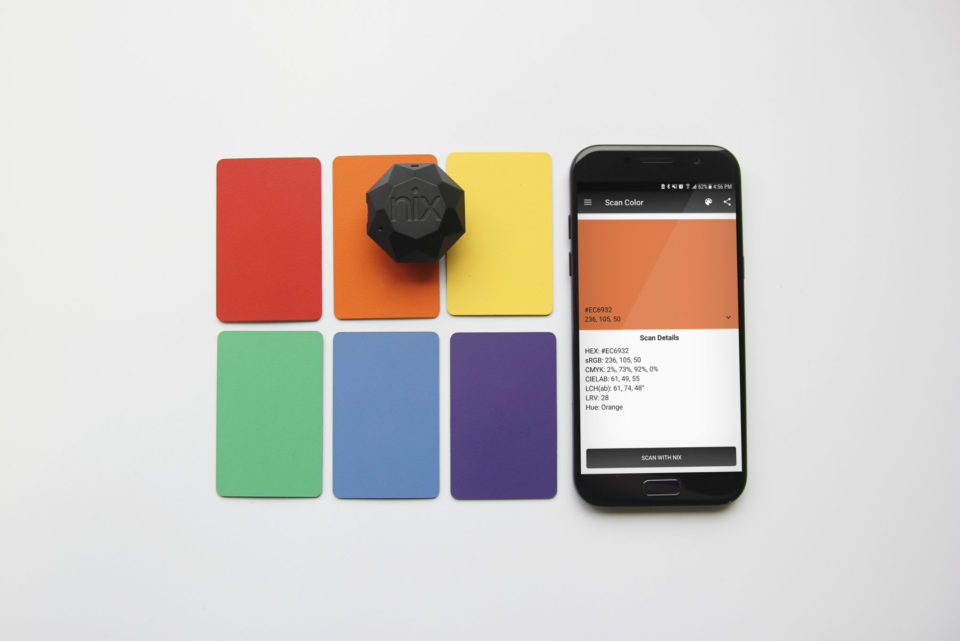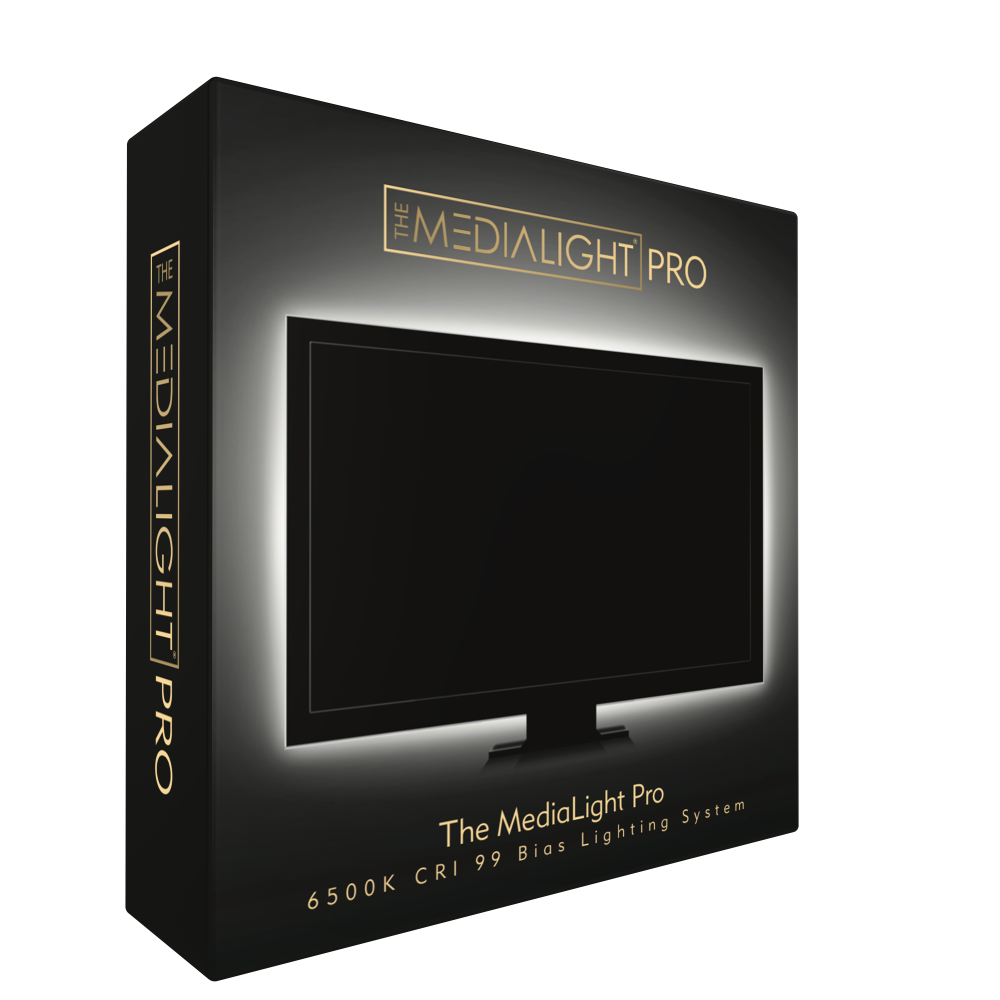I’m not sure if I’ve come across a colorist gift list before. This one has been on my mind for quite a while.

- They are too obvious
- Colorists already own equipment or prefer picking it themselves.
But most importantly because color is one of life’s most beautiful, fundamental (and alluring) phenomenon, and since as colorists we constantly deal with color (and light), we end up very passionate about it.
So this list is about passion for color, from this colorist’s perspective.
Nix Pro Color Sensor
$349 (or a mini version for $99)
Why? Because it is like having a color picker in your pocket.

Though not the first thing that comes to mind in our kind of color work, colorists love colors… and colors are everywhere, mostly outside of our screens. Beautiful (physical) colors that you’ll probably never remember correctly later… Why not store them? (in RGB, LAB CMY or XYZ) . A true color lover would understand the gesture right away.
There are other tools of this sort on the market, mainly for interior designers to identify paint codes… I picked the Nix because it gives color values too and because it has a cheaper (more limited) option available. I haven’t tested it yet but it has been on my list for a while.
The Medialight Pro 6500K CRI 99 bias light
$99
https://www.biaslighting.com/products/the-medialight-pro
Why? Because it’s so over-the-top accurate.

A good bias light is critical for good color work. Usually, light quality of CRI 90+ (95 if you really want to be on the spot) is enough.
And it’s what many (most?) colorists use daily in their suites.
However, there’s just something so delightfully absolute about CRI 99 that I’d switch my (perfectly suitable) bias light for this one without hesitation.
An Opal stone object/piece of jewelry
Varying prices (from lower than you expected, to more you can probably afford)
https://www.opalauctions.com/auctions/opal-jewelry/
Why? Because Opal is the colorist’s stone.
Opal stones (not all… the precious kind) are unique in their colorful iridescence, capable to express nearly every color of the visible spectrum.
What says “I love you” to a colorist more than an Opal ring or pendant?
A poster of Maxwell & Sutton’s Tartan Ribbon (1861)
(2 sizes $35 -$105)
20×30 size as well as a 42×63 size.
Why? Because it was the first color photograph. In a way, the birth of RGB. Any coloring suite or color lover should be proud to hang it somewhere.
This one begs an explanation. Tried to keep it nice and short 🙂
James Clerk Maxwell’s genius made him discover how our eyes construct colors from 3 primaries mixed in different amounts, and that these primaries in equal amounts construct white light (RGB pixels anybody?). He experimented with spinning tops to map hues to their RGB values and proved (1855) that any monochromatic light stimulating three receptors (in the eye) should be able to be equally stimulated by a set of three different monochromatic lights. in other words – that an orange will look similar to us whether we see it physically in its spectral color (wavelength of 630 nm) or on a screen as More R & G and less B value in our pixels (there is no spectral orange in screens)
He then wanted to test out his discovery. He asked a photographer friend (Thomas Sutton) to photograph for him 3 B&W shots of a Scottish tartan ribbon. Each with a color filter in front of the lens (Red, Green & Blue). He later projected the 3 B&W images (color channels) through corresponding filters on top of each other. In 1861 at a Royal Institution lecture on color theory Maxwell presented this photograph. And the birth of our craft with it.
Sites like this one have various (bit generic) gifts celebrating Tartan Ribbon.
A professional, pocket size (video) color chart
$95-$150 depending on the model
Why? Because colorists like charts and owning a small one may come in handy.
X-RITE COLORCHECKER PASSPORT VIDEO
Both these models are compatible with grading software and very accurate. (The OneShot was inspired by PVC veteran Art Adams). As a colorist, I love owning a pro chart (OneShot). First, because I can use it on my personal projects, but more importantly, it helps me educate and improve clients who aren’t aware of the benefits charts can add to their work.
*Bonus – For the colorists who aren’t lucky enough to work in correctly painted suites. An 18% gray card is the best way to un-bias your eyes between shots/scenes & to relieve opponents fatigue that causes afterimage.
Huge color jigsaw puzzles
From about $60 to $145 depending on the model.
Why? Because Colorists like color challenges (and because they are so cool).
A 1000 part color wheel where every piece is of a different color? Or maybe a 1000 part changing colors puzzle where every piece has 2 different colors depending on viewing angle?
These Jigsaws will blow the minds of any color lover.
A (good) Book about colors
(and not necessarily about color correction)
Why? Books make you (look) smart.
Click the cover for an Amazon link.
They are nice to have around the coloring suite, desk or coffee table, and of course… 😉 you might even learn a thing or two. I picked 4 classics in my opinion.
I think they don’t need an introduction, except maybe that Margulis’ LAB book has a newer edition that ran out, but the first one is still an amazing recommended read.
This one too – The Interaction of Color by Josef Albers, in form of an excellent (partly interactive) iPad app, is considered a must-have for anyone working with colors.
Philips Hue 4 bulb starter kit
$169 (nice price)
Why? Because its the most (non-destructive) fun one can have at home with light & colors.
Philips Hue White and Color Ambiance A19 60W Equivalent LED Smart Bulb Starter Kit
So much has been said about the Hue line of lighting products that it doesn’t really need my intro. I’ve been a user for many years (the oldest bulbs I bought still work BTW), and I absolutely love everything about it. Except white light (cool to warm), the bulbs can express a lot (the most I’ve tested) of colors and hues are fairly accurate. Overall light quality is pleasing too. I’m a big fan of the HueGo model for people who already have the system.
Adam Wilt’s Cine Meter 2 app and Luxi addon
($25+$22) – IOS only
Why? Because it is like having scopes in your pocket.
Cine Meter II for iPhoneCine Meter II for iPhone (iTunes link)
I’ve been a fan of Adam’s (also a PVC veteran) original Cine Meter app for many years, its successor adds a whole lot of functionality and features, turning your iPhone into a powerful light/color measuring tool.
FilmicPro camera app (IOS & Android) with unlocked cinematographer pack
($14.99 + $9.99)
Why? Because colorists like quality video (in Log).
Of all the camera apps, Filmic Pro stands apart. First of all, it’s the only one I know of that a feature-length Sundance film was shot on. And second, I believe it’s the only one that has a Log recording option (along with corresponding luts). If you want to push your phone’s camera to the maximum its tech can handle… Filmic is the answer.
A stylish, Color themed watch, wall or desk clock.
Various prices – low
Why? Because every shift must end at some point.
I was looking for a specific model, a ThinkGeek clock I wanted for myself, with a very cool RGB LED display. I was kind of bummed to find out it was discontinued and only offered now as a wristwatch. But looking for it made me find these sites with a nice selection of generic, yet cool, RGB themed wall clocks (they’ll print anything on many things apparently). Enough to cater to any taste and last minute gift I think.
Psychedelic Bonus…. (for the pros)
Color changing tiles
Why? Because no one has them.
If you’re accidentally planning to redesign your coloring suite anytime soon, why not consider the interesting and beautiful work of this company. They fabricate tiles that react to heat or contact by changing their colors in many different ways. I found it by mistake while looking for something else and been thinking about the possibilities ever since. Check out the gallery.

